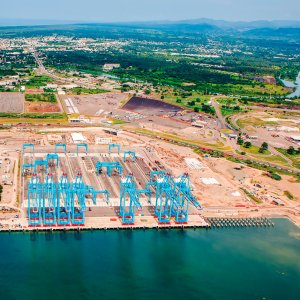Exposed: Treating and Protecting Steel

STORY INLINE POST
Q: What trends are spurring opportunities for companies like PPG, outside the marine sector?
A: New infrastructure projects have more exposed steel as part of the architectural design, which must have a modern appearance. This is why protective products can no longer be just functional, they must also be aesthetically attractive. A good opportunity for us is NAICM. The terminal floor, which is the area transited by passengers, will be coated while the “backstage” area, where employees work, will have uncovered concrete. Our products are meant for steel structures and for coating areas that are visible to the end user.
To participate in that construction we must provide a quote to each company that is bidding for the Terminal 1 building.
Q: Why is it important to apply protective coatings on steel structures, such as in malls or airports?
A: Steel structures require fire-retardant products, also known as passive protection or intumescent coatings. Buildings that have high human traffic levels, such as airports and commercial centers, prioritize the safety of people. The special technology in these solutions activates a kind of sponge that isolates the steel structure from the heat so that it does not lose ductility or mechanical resistance that could cause it to fall. Airports require coatings that can resist at least two hours of continuous exposure to heat. The main purpose is to give people enough time to evacuate and for the rescue units to arrive.
At our research facility in Mexico City, the Industrial Technology Innovation Center (CITI), we invite our clients to see first-hand how our products perform under extreme conditions. We have an oven in which we place a steel beam covered in our protective coatings and expose it to flames as hot as 500 to 600 degrees Celsius. There is a large market for these types of products, especially with the boom of the commercial real estate sector in Mexico City and Monterrey.
Q: How are these protective coatings used in other types of infrastructure?
A: There are intumescent coatings for two types of fires: cellulosic and hydrocarbon. Intumescent coatings for hydrocarbon fires must resist up to 2,000 degrees. These fires, which can take place in refineries and oil rigs and are called jet fires, can reach high temperatures in short periods of time.
Bridge infrastructures also require these products because they must withstand a wide array of conditions for many years. These structures must be recoated and maintained periodically so that the steel structures do not deteriorate. Applying a coating will increase its resistance to erosion, UV rays and make the structure more robust. Our products are also used in rail projects. The Guadalajara Train and Toluca-Mexico Interurban train both used a vast amount of our protective coatings. Projects like these have a lot of steel beams and supporting structures that must also withstand extreme conditions throughout their life spans.
Q: How could Mexico’s water infrastructure benefit from the use of protective coatings?
A: Deep tunnel sewage systems are infrastructures that often go unseen. They consist of large concrete tubs that are attacked by corrosive agents, while waste creates large amounts of hydrogen sulfide acid. We worked on the first phase of the Tunel Emisor Oriente, Mexico City’s newly constructed sewage system, where we applied a strong chemical coating.
We see many opportunities in the construction of water infrastructure, both sewage and drinking water.





















